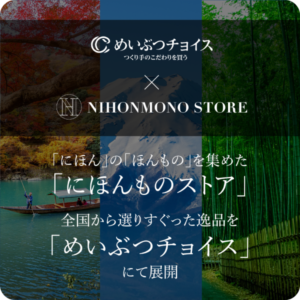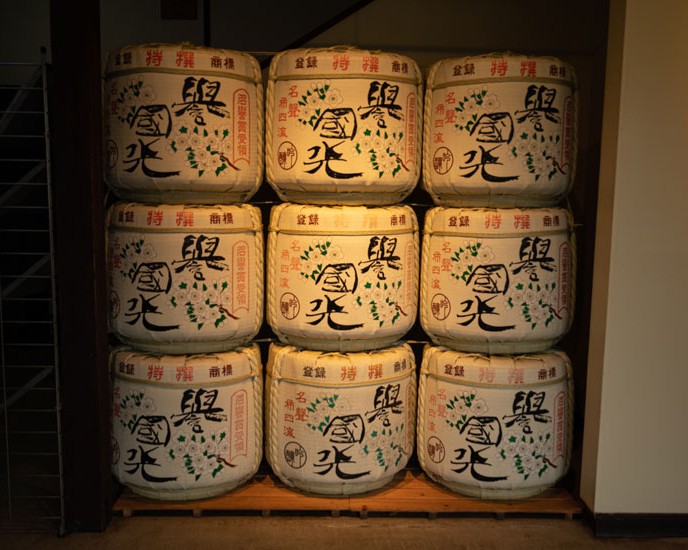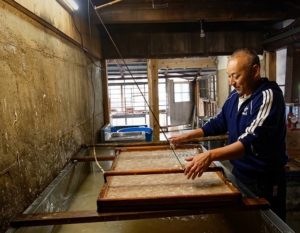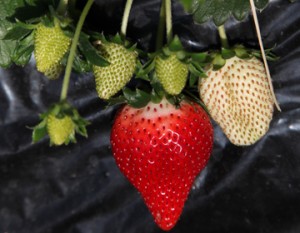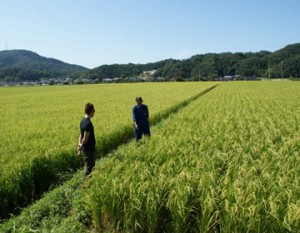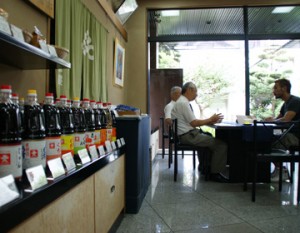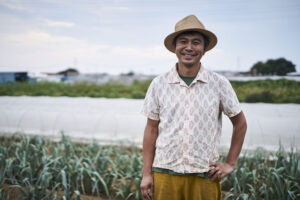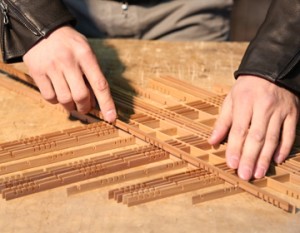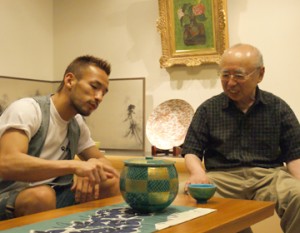Kawaba Village, located in the mountains of northern Gunma Prefecture, is a farming and mountain village rich in nature, spreading out at the southern foot of Mt. Tsuchida Shuzo, located in Kawaba-mura, is challenging the possibilities of sake produced by microorganisms by drawing out the power of bacteria through “kimoto zukuri,” an Edo period method of making sake with rice and koji malt using water from the underground streams of Mt.
Making sake that only Tsuchida Brewery can make

Tsuchida Sake Brewery, founded in Niigata in 1907, moved to Numata City, Gunma Prefecture, in search of the high-quality water of Mount Muson in neighboring Gunma Prefecture, where it brewed sake.
However, the company was forced to relocate again a short time later due to the rezoning of Numata City. In order to keep the taste of the sake as consistent as possible, the brewery chose to move to a new location that followed the same water line. The brewery has been producing and selling sake here since 1992, and continues to make sake using water from Mt.
Since its establishment, Tsuchida Sake Brewery had always been conscious of making sake that would “please customers,” but with the demand for sake declining, the company felt that simply making inexpensive regular sake for local customers would be enough to destroy the brewery in the future. We discussed the future direction of the brewery.
Then, they began to think that in order for the brewery to survive, it would be better to try something that they could confidently say “this is our sake,” even if it was difficult to make. He set a goal of producing results not with regular sake, but with sake with a specific name, especially junmai-shu, and winning a gold medal at the National New Sake Competition.
Just around that time, Araimasa of Akita Prefecture won the gold medal at the All Japan New Sake Competition for their Junmai-shu, a pure rice sake brewed from the same raw yeast stock.
Genki Hoshino, the toji of Tsuchida Shuzo, who had set a goal but did not know how to create the desired taste in junmai sake, contacted Shinmasa Sake Brewery and asked for training in order to get some hints on sake brewing.
Although he attended the training with some apprehension about brewing the sake they wanted to make with junmai (pure rice), he learned through this training that even junmai sake can be made lighter in flavor through technique. The training at Shinsei Shuzo helped him to realize that the “all Yamahai all Junmai” sake brewing, which was only an ideal, is now feasible.
Tsuchida Shuzo’s challenge to make the most of what is available in the region and to brew pure rice sake using the Yamahai brewing method has begun.
Making good sake with rice produced in Gunma

Tsuchida Sake Brewery is currently brewing sake with as little of the “Asahi no Yume” rice (edible rice) produced mainly in Gunma Prefecture as possible, so as not to waste the rice that local farmers have worked so hard to produce.
We were asked to make sake with a 90% rice polishing ratio as a private brand for a restaurant. When we tried it, we were able to make a good sake with an interesting flavor. Attracted by the interesting taste, we decided to reduce the rice polishing ratio to 90%, and now we are pursuing the creation of our own unique sake that incorporates the whole flavor of the rice into the sake,” says Genki Hoshino, toji (master brewer) of Tsuchida Shuzo.
Generally, fat and protein, which are abundant in the surface layer of the rice, cause a tangy taste in sake, so in daiginjo-shu, which has less of a tangy taste, the rice is polished down to less than 50%. It is also an important part of the sake’s character. Since the rice polishing ratio is an important factor in sake brewing that influences aroma and flavor, Tsuchida Brewery has chosen to make sake with a 90% rice polishing ratio in order to bring out the best of the rice’s individuality.
Unique flavor produced by naturally filtered underground water

Hotakayama, the water is slightly alkaline and medium soft with a hardness of about 78. In sake brewing, the properties of the water are one of the most important factors that are directly reflected in the taste of the sake. Sake brewing takes advantage of the water available in this region. The quality of sake varies greatly depending on the water used.
The water has a great influence on the quality of the sake. Not only the quality of the brewing water, but also the temperature is important. In winter, the snow covered Mt. Hotaka’s melt water is cold and goes well with the sake we want to make,” says Mr. Hoshino.
As the name of the area suggests, Kawaba Village has many rivers, and Tsuchida will continue to make sake that is unique to Tsuchida by taking advantage of the quality of the water.
The bacteria that live in the brewery are the history of the brewery itself.

Sake is basically made by fermenting and brewing three ingredients: rice, water, and koji. During this process, the brewery’s own unique aroma and flavor is created by the activities of various microorganisms, including lactic acid bacteria, that live in the brewery.
In the process of making sake, the steamed rice is grinded to quickly dissolve the rice, and then mixed with malted rice and brewing water to make sake mother, a process called yamahoshi. In “Yamahai-brewing,” in which this process is eliminated, the steamed rice is dissolved by the power of koji without being grinded, and alcohol fermentation takes place. Therefore, in “Yamahai-brewing,” the work of microorganisms in the brewery is particularly important.
Mr. Hoshino says, “After switching to Yamahai-brewing, I never had any failures while I was making the sake on my own, but when I increased the number of brewers by bringing in young staff to expand the business, things started to go wrong.
At that time, I consulted with the toji at the Taketsuru Sake Brewery in Hiroshima, and he told me, “Yamahai is a virtuoso art. He advised us to try the oldest method of sake brewing, “Yamahai is a master craftsman’s art, so inexperienced brewers should try to learn the basics by using the oldest sake brewing method, Namahashi, first.
Mr. Hoshino then thought, “It is not the technical skills of an individual brewer, but rather the skill of the brewery that should be preserved,” and advised the president of the brewery. The president decided to make all the sake using the traditional sake brewing method of “Namo Hashiroshi,” and the brewery has now shifted to the current method of making all its sake using the traditional method of “Namo Hashiroshi.
After trial and error, we arrived at the interesting point of making sake yeast.

Nama-hashidate brewing is the most traditional brewing method for sake since the Edo period and utilizes the competition for survival between rice, water, koji, and microorganisms such as lactic acid bacteria that live in the brewery. Tsuchida Sake Brewery is dedicated to junmai (pure rice) sake, which is made without the addition of yeast or brewing alcohol, and uses modern machinery and equipment to carry out the techniques inherited from previous generations.
The sake is made with a design that says, “This is how it’s supposed to be,” but it turns out to be “This is how it’s supposed to be. Even if the sake is different from what was originally intended, it is sometimes unintentionally appreciated.
The process of making sake by guiding and encouraging invisible microorganisms is a way to enjoy the differences in taste and complexity, but the unpredictable movement of the bacteria is always a recipe for failure.
However, the unpredictable movement of the bacteria always leads to failure. That discovery and learning is what makes the process of making sake yeast so interesting,” says Hoshino.
Exploring the possibilities of sake by focusing on additive-free products

Mr. Hoshino says, “Our president is a person who has a strong desire to tell customers about the world they have not yet seen and the various possibilities that sake has.
Understanding that “it is my job to give shape to these possibilities” and through trial and error, he arrived at a method that allows him to challenge the various possibilities of sake: the “kamishige” method of brewing without using any additives, including lactic acid.
We value the accidental nature of additive-free brewing and cultivate techniques that encourage the power of the bacteria. Using the brewing methods of the Edo period and repeating discoveries and verifications with modern tools, they hope to expand the world view of sake.
Homarekokko” has been a local favorite.

Tsuchida Shuzo, which for many years had made “Homarekokko,” a locally popular regular sake with added alcohol, had many customers who had left the brewery because of the change to all-additive-free sake brewing.
The company also made products for customers who had been drinking the same brand, but the change in brewing method resulted in higher prices, which angered not only local customers but also liquor stores. In fact, sales of the sake actually declined.
Now, however, they have revived Homarekokko as a dry sake for the local market, designed to reproduce the lingering taste, sharpness, and flavor of the former Honor Kunimitsu without the addition of pure rice. In pursuit of the brewery’s flavor, the company also commercialized sake made with technical challenges and special specifications as the Tsuchida Series. These two brands are now the company’s two signatures.
One of the reasons for the recovery in sales may be the fact that customers are rooting for the brewery to take on serious challenges with high expectations.
Some good sake comes from failure.

As we continue to experiment through trial and error, we naturally make many mistakes.
We tried to market a “failed sake” that did not turn out the way we had originally intended due to the action of unexpected microorganisms, and it sold well.
The trouble that occurs because of the challenge is named “F,” and after a thorough explanation, the sake is made into a product. Many of the best-selling sake products are the result of failures.
Because we are making sake without additives, we never know what might happen at any time, so we ask those who support us to drink our sake with an understanding of what is going on, and we continue to do what we can do in the sake brewing process with sincerity and dedication.
Tsuchida Shuzo believes that this will lead to joy for everyone, including the drinker and the brewer.
Tsuchida wants to create the “ultimate bottle.

Mr. Hoshino says that as he worked on the process of making sake, he gradually discovered the value of “rice cultivation,” the main raw material. Rice harvested through natural cultivation without using any pesticides or fertilizers, and grown only by the power of nature, is used to make sake without cutting down the rice as much as possible. He believes that the resulting sake will be the pinnacle of Tsuchida, a sake that only the Tsuchida Brewery can produce.
Tsuchida is still searching for the image of “the ultimate bottle,” although he has a strong desire to produce the ultimate sake. However, he believes that by not cutting the rice, the flavor changes and the individuality of the wine becomes clear, and that the lack of additives makes the wine unstable, but it also activates the microorganisms, giving the wine a taste unique to this region.
I feel like there is a clue there, but I don’t have a clear idea of what it is yet,” says Hoshino. Eventually, he hopes to unify the product line and create something that says, “This is our sake.
Don’t look for repeatability, now is the time to challenge yourself

In order to find “the ultimate bottle,” he is now taking on many challenges, experiencing as many as possible, and expanding his brewing process once and for all.
In order to get to where he wants to be, he is in the process of broadening his range and increasing his technical draw, so the taste is not constant, and it is different and blurred every year. There is no stability, and while there are times when we fail, there are also times when we produce good sake with flavors that exceed our expectations.
He is currently in the process of broadening his image and gathering data and experience on the possibilities of sake brewing with additive-free sake brewing, so he is not seeking to replicate the process at this stage.
Retain data as warehouse technology

In the analysis room at Tsuchida Sake Brewery, the condition of the mother liquor and moromi are analyzed in detail, and during the brewing process, the yeast is observed daily under a microscope to control the fermentation process. The taste and aroma of sake is greatly affected by how well the yeast is kept alive during the pressing of the mash, which is the process of separating the mash into raw sake and sakekasu (sake lees).
However, even with daily inspections and data collection, if there are no additives and even the yeast is additive-free, “to be honest, we don’t know what is working,” says Mr. Hoshino.
In order to obtain technical data, he conducts “research brewing” every year, deciding on a theme, conducting experiments, and recording how the experiments actually turn out. The results of these experiments are reflected in future production plans.
He does not rely on intuition just because it is an old-fashioned, traditional method of production, but rather carefully collects and analyzes data one by one. It is also a challenge for them to provide the same products year after year without changing the blueprint of their standard products such as “Homarekokko” and “Tsuchida Kimoto.
Challenging the possibilities of sake

Tsuchida Sake Brewery has chosen a special brewing method called “Namahashigashi-zukuri” in sake brewing. Although it is not a so-called normal specification, Tsuchida Sake Brewery has a strong desire to be recognized for the “pure rice sake brewed using the ‘kamishige’ method that they have chosen themselves.
The brewery’s specific goal is to win a gold medal at a national sake competition.
Tsuchida’s attitude toward the current trend in the sake industry of producing sake with a similar taste to that of highly rated sake is evident.
There is more than one way, there is this way and this way. I think it is our role to show this with our additive-free pure rice sake.
Tsuchida Shuzo’s challenge will continue so that the brewers themselves can enjoy making sake and pass on brewing techniques and sake culture to the next generation.
